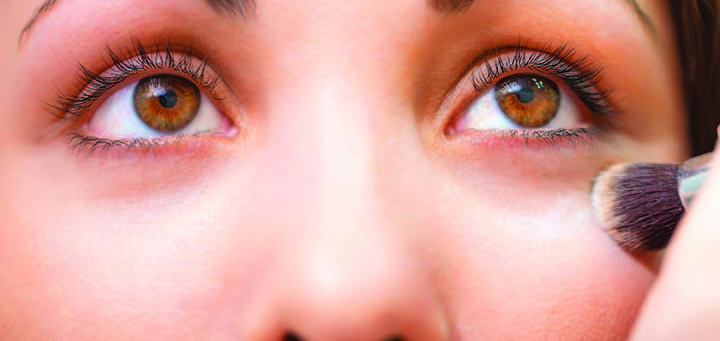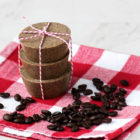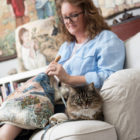
Trending
Baking (v.): Cooking up a coveted complexion
November, 2017
To most people, baking involves mixing together a sugary, eggy, floury concoction, putting it in the oven and waiting for a treat to rise from the batter. These days, however, a new kind of “baking” is heating things up—and it has nothing to do with your oven. Here we explore a makeup technique called “baking” and discover what it is, who’s doing it and why.
What It Is
Baking, also called “cooking,” is a makeup technique that uses translucent powder to set your foundation, even out your skin tone and accentuate your face’s bone structure/best features. The technique is similar to highlighting (applying a cream or powder to attract light and attention to desired parts of your face (cheekbones) and body (collarbones and shoulders), but looks matte rather than dewy or shimmery.
Although this beauty trend is new to many, the technique actually has a long history, dating as far back as ancient Egypt. In more recent centuries, baking has been a go-to technique for makeup artists who apply stage makeup on actors and actresses and has been used in the drag community for years.
How It’s Achieved
The baking process is simple, really. First, apply your foundation and concealer as usual. Next, using a damp sponge applicator, generously apply translucent powder to the areas of your face that you want to brighten (under the eyes, on the bridge of the nose, along the top of your jaw bone and across your forehead). Really lay it on thick! Next, let the powder set for 5 to 15 minutes. As you wait, the heat from your face “bakes” the base foundation and the concealer. When the time is up, dust away the excess powder with a fluffy brush, and voila!—you are left with a smooth, even finish that should last all day.
The Pros
By now you may be asking yourself if this hot trend actually lives up to the hype. The answer is: that depends on you. If you have an oily complexion, baking is the magic that will keep your skin looking matte all day. For other skin types, baking will help create an even skin tone. For example, if you have under-eye puffiness or dark circles, baking will help you blend your eye area with the rest of your face. As an added bonus, baking will also give your regular concealer more staying power and help boost its coverage.
The Cons
As wonderful as baking can be, it definitely won’t be everything to everyone—especially if you have aging skin. So, if you remember spiral perms or have fond memories of the 80s, proceed with caution. Baking uses layers upon layers of product, which might cause fine lines to become more prominent. Also, those with pale skin tones might not get the dramatic, contoured results that others with darker-toned skin will achieve. Lastly, if you’re simply the type who prefers a natural look, save this technique for special occasions or on-camera moments.
Why Is Baking So Popular?
Baking owes its moment in the sun to celebrities like Kim Kardashian, whose makeup artist, Mario Dedivanovic, uses the technique to set her makeup for events. Baking was also recently brought to light by RuPaul Charles on his popular television show RuPaul’s Drag Race. Add some social media to those celebrity endorsements—makeup artists are baking up a storm on Instagram and YouTube—and you have the recipe for a hot, new beauty trend. t8n
Save Some Time
There’s no doubt that baking has many benefits, but adding efficiency to your makeup routine isn’t one of them. To save time, do your eye makeup while your powder is setting. As a plus, any fallen eye shadow will get swept away when you brush off your excess setting powder.
Baking Tips for Dry or Aging Skin
If you’d like to try baking but have dry or aging skin, you can still get good results if you prep your skin: wash with an exfoliating cleanser, then apply a moisturizer, eye cream and a plumping primer. Now you’re ready to bake!












